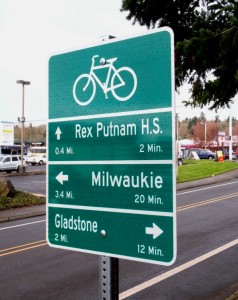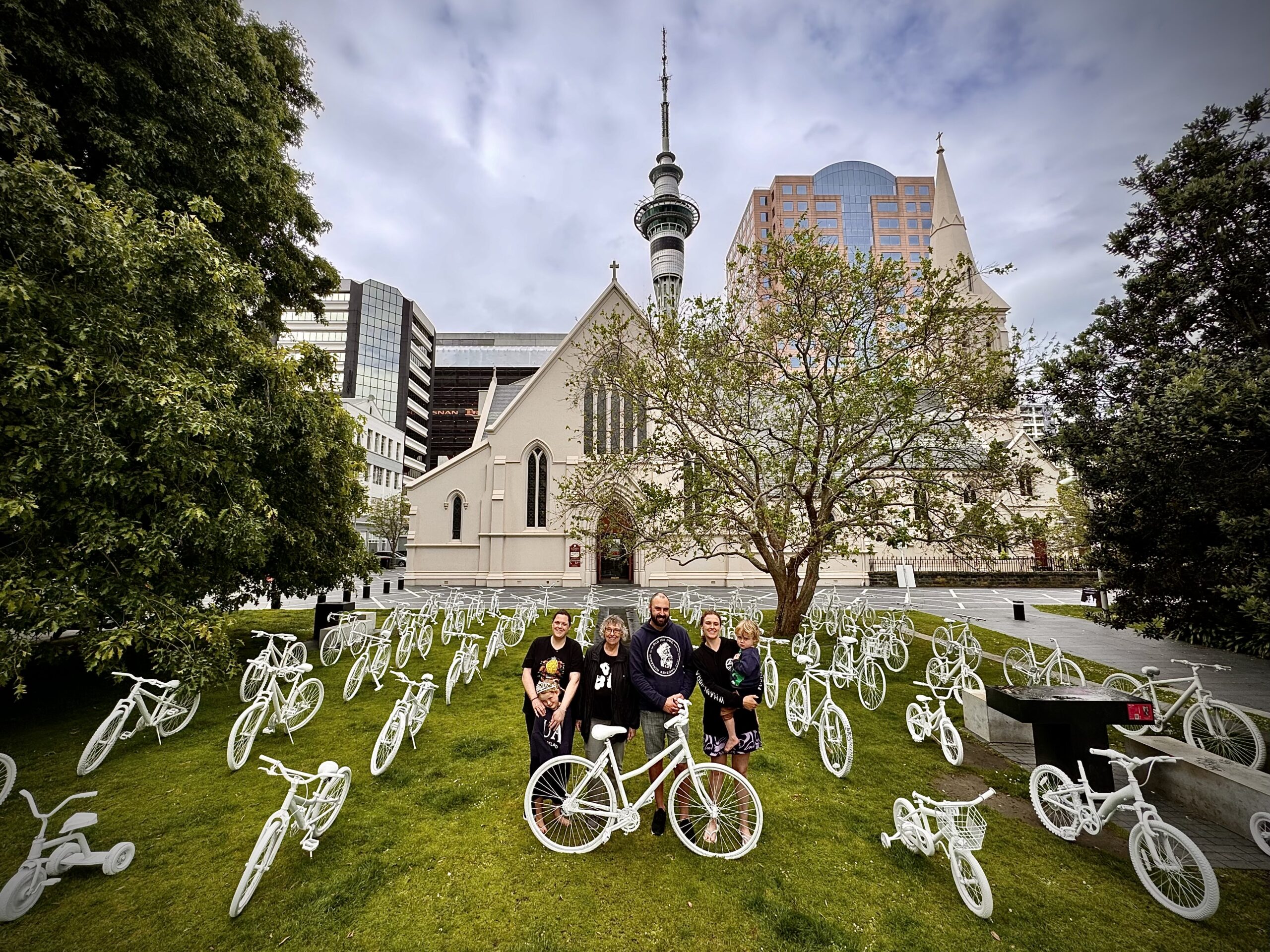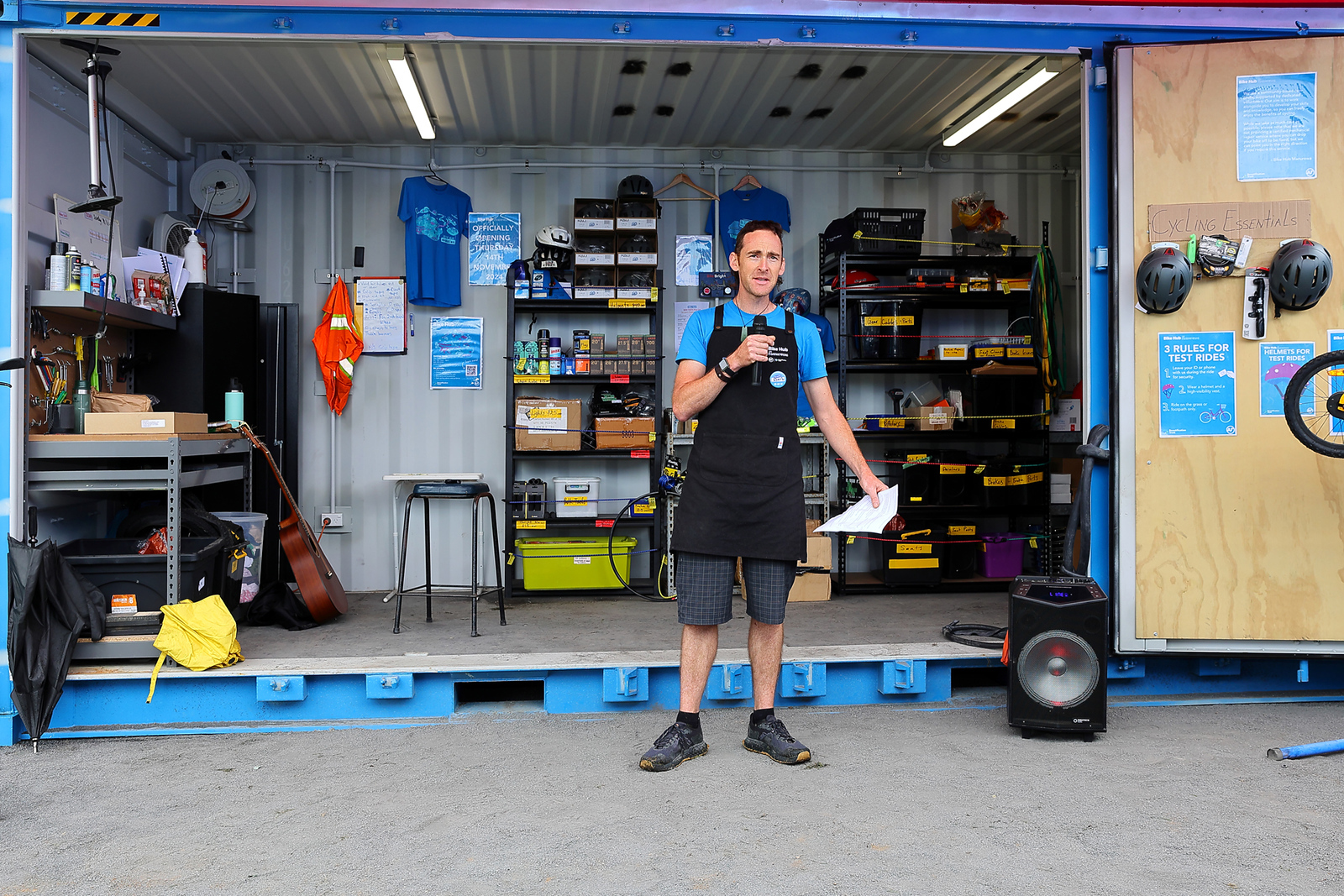A blog by Ben L and Bryce P
What prevents more people from riding bikes to school, work, to shops or simply to a friend’s house? The biggest deterrent to cycling, for many people is their perceived lack of safety while riding. This has been confirmed by a recent study by Auckland Transport.
Currently most cycling focus is on high quality cycle paths – be they on-road lanes or dedicated off-road cycle paths or, more likely in the shorter term in Auckland, shared paths.
There is also an emergence, mostly via Local Boards, of ‘Greenways’ projects. The Greenways look great and are something to aim for – but due to cost (the on-road sections involve quite major reworking of roads) they cannot be built everywhere.
In fact, all these off-road projects tend to be quite expensive to build, especially where land has to be bought. So are there other options for quickly expanding the Auckland cycle network without breaking the bank? Let us explore this a bit more.
The image, in most people’s heads, of quality cycle infrastructure is off-road cycle paths – but even the Dutch only use these where necessary or most suited (such as between villages / on main roads). Most Dutch cities utilise a low speed (30 km/h) network of traffic calmed residential streets and these are linked together by the much photographed dedicated cycle paths. We really need both – the flashy infrastructure on key routes, and the much lower-key changes area-wide.
![A cycle street - except for the houses, nothing we couldn't easily have in Auckland [Photo from aseasyasridingabike.wordpress.com]](https://www.bikeauckland.org.nz/wp-content/uploads/2013/11/Cycle-Street.jpg)
So, the aim then is to follow the Dutch idea (also used to good effect in the likes of Portland, USA as well), utilise some creative thinking behind the transformation of New York City (planters and paint) and create a network of safe, residential road routes for riders of all ages and abilities and to do it on as small a budget as we can get away with.
The point is that cars are not inherently unfriendly to walkers or cyclists. If a car is travelling 30 km/h or less, the vehicle can stop very quickly and does not present a significant danger [Editor’s note: By some measures, Auckland is already safer to cycle than most of New Zealand, likely because as our average traffic speeds are lower than in other regions – as of 2010, we had 25% of NZ’s cycle crashes, but only 18% of the associated social cost – in short, our cycle crashes tend to be less serious than, say, in the Waikato].
30 km/h or less represents a speed where motor vehicles, cycles and pedestrians can safely share the street space. Therefore, the challenge is not to eliminate cars but to encourage drivers to travel at safe and appropriate speeds on residential streets, something that unfortunately happens far too seldom nowadays in Auckland.
Some streets have so little through traffic that no changes are necessary. However, those streets often tend to be isolated pockets and, as we all know, it is connected networks that are needed for any form of transport to be a useful option.
The main features of cycle streets that achieve this aim include:
 Bicycle friendly road markings and signage. Cyclists need to know that they are welcome on the street and also, just like motorists, they need to know where they are going. Sharrows are one way that streets can be designated as cycle friendly areas and have been used to great effect in North America. Portland has also been great at using cycle friendly signage to create networks to destinations. This is the kind of signage that we should see more in Auckland.
Bicycle friendly road markings and signage. Cyclists need to know that they are welcome on the street and also, just like motorists, they need to know where they are going. Sharrows are one way that streets can be designated as cycle friendly areas and have been used to great effect in North America. Portland has also been great at using cycle friendly signage to create networks to destinations. This is the kind of signage that we should see more in Auckland.
- Narrowing particularly wide roads to discourage high vehicle speeds. This can be done by physically narrowing the street (obviously an expensive option) or redrawing the street markings to make the street appear narrower – for example, by delineating the parking areas with painted lines. This may also include allowing parking on both sides of the road where it is currently only on one side – parked cars are not necessarily a bad thing as they create barriers to speed. In a slower-speed road where the environment allows cyclists to safely ride in the middle of a lane, the dreaded “dooring” risk also is much reduced.
- Eliminate centre lines to discourage the “expected segregation” of the street space. The presence of centre lines encourages motorists to think they have ownership of their side of the street and discourages using the whole street to allow all modes to co-exist. Make motorists feel more like they are sharing the street, and have to have greater regard to the existence and positioning of other road users – instead of blindly trusting a “this is my lane” approach – and so slow them down, by removing something prescriptive.
- Traffic calming infrastructure. This may take the form of speed bumps, chicanes, pedestrian tables at intersections, small roundabouts at intersections or some combination of the above. These traffic calming measures would be more appropriate on wider, straighter streets that encourage high speeds and “rat running”. As Paul Steely White illustrated so well recently, let’s start with cheap bollards and planters. If the traffic calming is a success we can then lower the speed limit (remember in NZ you pretty much have to slow the cars and only then can you decrease the speed limit) – and eventually make the changes permanent using fancier infrastructure.
As always the best examples of how to achieve this can be found from those paragons of cycling virtue, the Dutch. We often forget that from the 1950s to the 1970s, the Dutch were just as enthusiastic about motorised traffic as Auckland still is today and cycling plummeted in the Netherlands in that period.
Many residential developments were built that were very motor vehicle friendly and cycle and walking unfriendly. There is now a process of slowly transforming these residential developments and what is so surprising is how little really need to be done. [Editor’s note: Point England in Auckland has had a successful trial project a few years back, which managed to traffic-calm local streets to an average speed of 30 km/h, and ensure that the 50 km/h speed limit on main roads was obeyed much better – we are aware of a follow-up project in South Auckland which is about to go public very soon].
Creating cycle-friendly streets is not an expensive exercise; and the only real requirement for success is for motorists to accept that, at least until they are back on the main arterials, they must share the street space with other non-motorised users on a much more equal footing. This is a great video that illustrates the transformation process.



